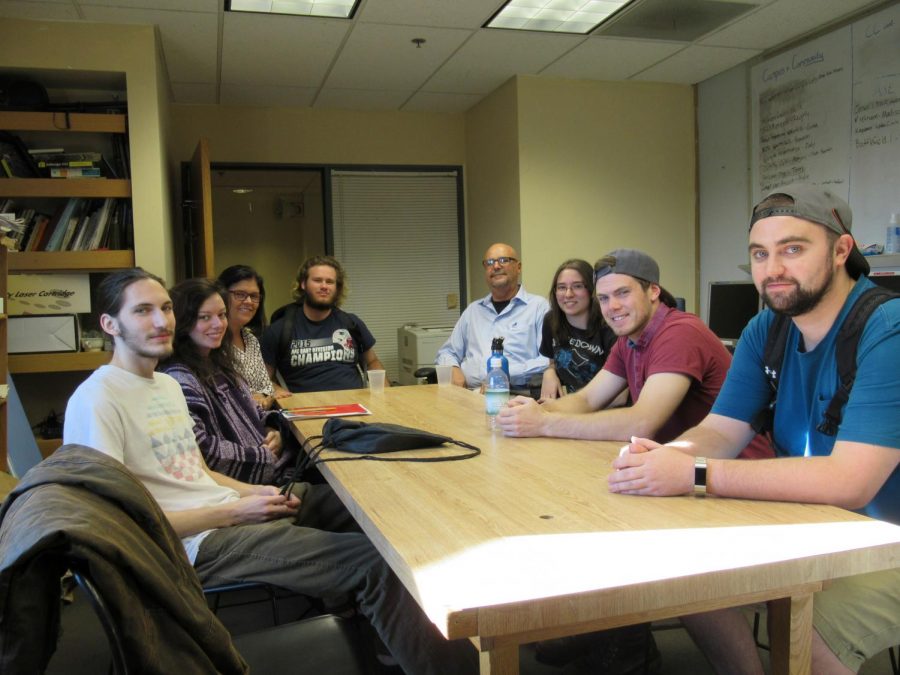Path of Cuban reform is uncertain
As part of a two-day visit to the campus by Professors Rafael Betancourt and Consuelo Martin Fernandez, both from the University of Havana, Betancourt provided a crisp overview of the state of reform in Cuba during a 45-minute presentation in Stearns Performance Space on Oct. 3.
Betancourt first focused on the changes in Cuban-American relations. “It started with the opening of the process of normalization that seemed to overcome 50 years of conflict,” Betancourt said. “This took place with the announcement of Presidents Castro and Obama in the summer of 2014. Cuba and the U.S. were ready to put the hatchet down.”
New diplomatic relations were set to open up between both countries leading to new, looser travel regulations.
Unfortunately, this didn’t last long, and new initiatives by the Trump Administration to roll back the easing of travel restrictions under Obama are slated to happen this fall. “Trump began with prohibiting individual travel to Cuba and doing business with certain businesses owned by the Cuban military. Nothing else has happened. A lot of bark, very little bite,” Betancourt said.
Still, those threats to roll back access are concerning. Travel plays a large role in the Cuban economy even though the U.S. embargo has until the Obama reforms strictly limited U.S. travel to Cuba. Due to the Obama-era actions, Cuba has subsequently seen a huge spike in U.S.travel. “The first six months of 2017 has already doubled the amount of American and non-Cuban family members that have travelled in all of 2016,” said Betancourt, noting that the U.S. embargo drains money that the Cuban people and government could be making from tourism and trade, which remains strictly hobbled by U.S. law.
According to Betancourt, the U.S. embargo remains by far the biggest obstacle to Cuban development. “The U.S. embargo cost Cuba, in 2015, about 4.6 billion, and so far, at least by the end of the year, an accumulated cost of maybe 125-126 billion dollars, which is double the Cuban GDP,” Betancourt said.
While the United States limits Cuban reform externally, governmental shifts are having an internal impact.
The historic leadership— those in power since the 1959 revolution—still control the Cuban government but are planning to step down after the upcoming election. This will turn a new page in governing style and economics, unless they don’t hold true to their promises. “Who really has the power in Cuba? asked Betancourt. “It’s not the National Assembly; it is the Communist party.” It is very much assumed at this point that the Party will retain control of the government although the leadership is apt to change.
Betancourt believes that this leave Cuba with three possible futures. The first is that the historic leaders do step down from both the government and the party, leading to many new leadership positions opening up.
The second is that the historic leadership steps down from the government, but remains in control of the Communist party. “You have a powerless assembly, and then the old leadership continues to hold the real power,” said Betancourt.
The third possibility is a mix of the first two. Some of the historic leaders will remain in power in the Communist party, but the national assembly would be given increased power.
While looming changes in governance have an impact on development, the current economy remains a limiting factor on Cuban reform and development. Many sectors of the economy, according to Betancourt, are stagnating. Plans have been made in the past few years highlighting the areas of strategic development in Cuba, but little progress has been made so far. “It’s like the old five-year plans, except not with that name,” Betancourt said.
According to Betancourt, Cuba wants to focus upon expanding socialism within the context of coexisting with a free market. “The goal is not to roll back socialism, but to create a prosperous state of democratic socialism,” he said. “The idea is, we are able to maintain the basic structure of Socialism, the basic support of the population, the basic role of the state corporations in terms of driving the strategic sectors of the economy, but there is a market that plays an important role in employment and providing services, in decentralizing the economic activity down to the local level.”
Betancourt notes that Cuba also needs to implement a universal currency exchange rate due to the use of two different national currencies. “We have two currencies and no economy can live like that, but we’ve been doing it for 30 years,” Betancourt said.
Cuba has the peso used domestically and the CUC, used by foreign visitors for hard currency transactions on the island.
Betancourt believes that Socialism with a m as opposed to market socialism is the best economic structure to fit the needs of the Cuban people at this time. “This would be an alternative, not only for Cuba, but this would be an alternative for many countries of the global South that are caught between the choices of implementing a very severe capitalist restoration, or having the government play a role in maintaining equity,” said Betancourt.



